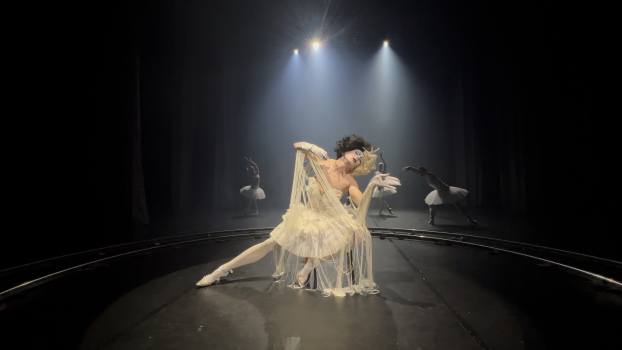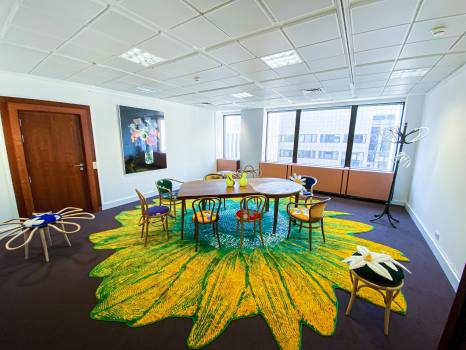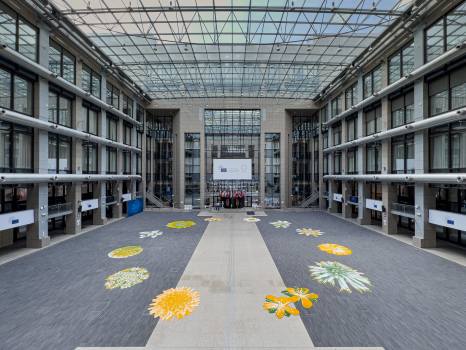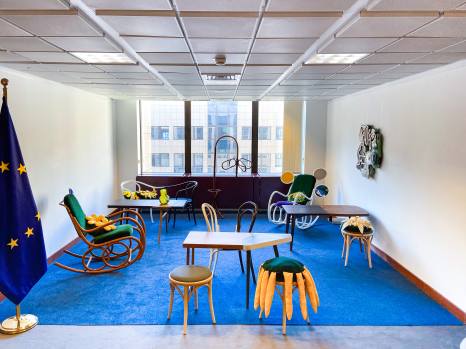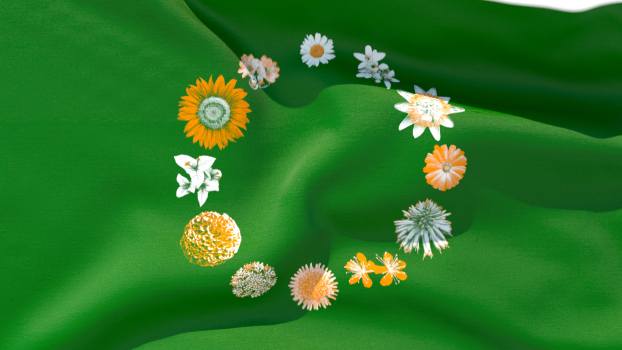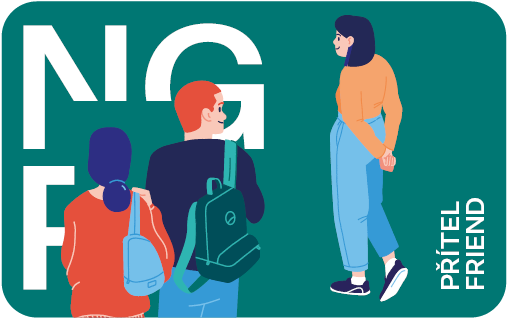On the occasion of the Czech Presidency of the Council of the
European Union, National Gallery Prague
will represent the Czech Republic with The Flower
Union project at the Council’s headquarters starting from 12 July and with
the exhibition Milena Dopitová: Even Odd
at Bozar – Centre for Fine Arts in Brussels starting from 16 August.
The Flower Union exhibition project (12/7–31/12/2022) realized by the National Gallery Prague and curated by Michal Novotný, Director of the Collection of Modern and Contemporary Art, was prepared by a group of nine young Czech artists, textile designers and printmakers – Jan Brož, Jakub Choma, Barbora Fastrová, Johana Pošová, Jakub Jansa, Valentýna Janů, Martin Kohout and the Overall Office team. The project prepared with the support of the Office of the Government of the Czech Republic for two Council’s buildings – Justus Lipsius and Europa Building – emphasises the need for dialogue, care for others and for our environment. Its purpose is to present the Czech relation with nature and to highlight the key topics that will be linked to the Czech Presidency, whether it is security issues or promotion of EU values in the countries of Eastern Europe. It also underlines the environmental agenda which will strongly resonate during the Presidency.
“The Czech Presidency in the EU brings new challenges that will have an impact on art and culture. We are honoured to be able to realize this presentation expressing much-needed solidarity, pride in the country's cultural heritage and willingness to contribute to the debate about the role of artists in the present time,” says Alicja Knast, General Director, National Gallery Prague.
The main themes of the Presidency are unity in diversity, care and healing, as well as recycling and upcycling – which are also reflected in the materials and manufacturing techniques used. The symbol is a wreath made of 12 medicinal plants from different regions of Europe, incorporated in a large-scale, ecologically manufactured carpet installed on the floor of the main atrium of the building where the Council’s meetings are held. The weaving of wreaths is an ancient custom. The artists have decided to replace the circle of 12 golden stars from the flag of the European Union. The stems of the individual flowers form an intertwined and tight bond symbolizing the European unity of otherwise distinct regions. A unity that does not exclude local identity, folklore and tradition.
“We have been working on the presentation for more than a year, trying to make it both collective and individual, to blur the boundaries between art and something usable, as well as between free artistic expression and service to the common ideals we believe in,” says Michal Novotný, Director of the Collection of Modern and Contemporary Art, National Gallery Prague.
The notion of weaving and intertwining also appears in a large-scale, hand-woven tapestry which depicts the process of recycling in a spectacular way. It measures just under 20 metres and was created during six months of intensive work by Barbara Fastrová and Johana Pošová from cut-up second-hand textile tailored for the press conference room.
The recycled yarn and other leftover fabrics were also used to create the fabrics used by the Overall Office fashion designers for the furnishings. The artists were also tasked with furnishing the Council’s internal meeting rooms. The chairs, tables and stools are modified pieces of old and new furniture made of bentwood. By modifying them with leftovers or scraps, the individual pieces of furniture intertwine and expand which evokes interconnectedness and the resulting need to engage in a dialogue.
The collection of objects by Jakub Choma, in collaboration with Tomáš Kocka Jusko and Alex Selmeci, will serve as a meeting place, infopoint and library as well as a place to sit down for visitors. The main object, resembling a monolith, is partly made of layers of natural cork.
The project will be accompanied by a website, which was, like the graphical representation of the floral flag, designed by Jan Brož. The campaign includes three videos by Martin Kohout, Valentýna Janů and Jakub Jansa. Jansa’s video takes viewers through a garden party using allegory and exaggeration, and offers scenarios of what it would be like if there were no European Union. The costumes by Overall Office are made from leftover fabrics from shirts, ties, jackets and recycled yarn using a unique art protis technique that was developed in Czechoslovakia in the 1960s.
Another international project of the National Gallery Prague, this time in collaboration with the Brussels-based BOZAR – Centre for Fine Arts, will be the exhibition Milena Dopitová: Even Odd (16/8–30/10/2022), which will consist of a collection of objects metaphorically depicting a sense of belonging of the European society. Dopitová builds them on a simple, yet a very charming symbolism of the infrastructure that interconnects the European countries. A sense of belonging and unity is not given and must be sought over the long term, which is a daily task for each of us. Eva Skopalová is the curator of the exhibition.
Both projects will be also presented in the Czech Republic in 2023.
The exhibition at the Council of the EU will be supported by the Office of the Government of the Czech Republic, the exhibition of Milena Dopitová at Bozar will be supported by the Ministry of Culture of the Czech Republic and the Ministry of Foreign Affairs of the Czech Republic.
The Flower Union exhibition project (12/7–31/12/2022) realized by the National Gallery Prague and curated by Michal Novotný, Director of the Collection of Modern and Contemporary Art, was prepared by a group of nine young Czech artists, textile designers and printmakers – Jan Brož, Jakub Choma, Barbora Fastrová, Johana Pošová, Jakub Jansa, Valentýna Janů, Martin Kohout and the Overall Office team. The project prepared with the support of the Office of the Government of the Czech Republic for two Council’s buildings – Justus Lipsius and Europa Building – emphasises the need for dialogue, care for others and for our environment. Its purpose is to present the Czech relation with nature and to highlight the key topics that will be linked to the Czech Presidency, whether it is security issues or promotion of EU values in the countries of Eastern Europe. It also underlines the environmental agenda which will strongly resonate during the Presidency.
“The Czech Presidency in the EU brings new challenges that will have an impact on art and culture. We are honoured to be able to realize this presentation expressing much-needed solidarity, pride in the country's cultural heritage and willingness to contribute to the debate about the role of artists in the present time,” says Alicja Knast, General Director, National Gallery Prague.
The main themes of the Presidency are unity in diversity, care and healing, as well as recycling and upcycling – which are also reflected in the materials and manufacturing techniques used. The symbol is a wreath made of 12 medicinal plants from different regions of Europe, incorporated in a large-scale, ecologically manufactured carpet installed on the floor of the main atrium of the building where the Council’s meetings are held. The weaving of wreaths is an ancient custom. The artists have decided to replace the circle of 12 golden stars from the flag of the European Union. The stems of the individual flowers form an intertwined and tight bond symbolizing the European unity of otherwise distinct regions. A unity that does not exclude local identity, folklore and tradition.
“We have been working on the presentation for more than a year, trying to make it both collective and individual, to blur the boundaries between art and something usable, as well as between free artistic expression and service to the common ideals we believe in,” says Michal Novotný, Director of the Collection of Modern and Contemporary Art, National Gallery Prague.
The notion of weaving and intertwining also appears in a large-scale, hand-woven tapestry which depicts the process of recycling in a spectacular way. It measures just under 20 metres and was created during six months of intensive work by Barbara Fastrová and Johana Pošová from cut-up second-hand textile tailored for the press conference room.
The recycled yarn and other leftover fabrics were also used to create the fabrics used by the Overall Office fashion designers for the furnishings. The artists were also tasked with furnishing the Council’s internal meeting rooms. The chairs, tables and stools are modified pieces of old and new furniture made of bentwood. By modifying them with leftovers or scraps, the individual pieces of furniture intertwine and expand which evokes interconnectedness and the resulting need to engage in a dialogue.
The collection of objects by Jakub Choma, in collaboration with Tomáš Kocka Jusko and Alex Selmeci, will serve as a meeting place, infopoint and library as well as a place to sit down for visitors. The main object, resembling a monolith, is partly made of layers of natural cork.
The project will be accompanied by a website, which was, like the graphical representation of the floral flag, designed by Jan Brož. The campaign includes three videos by Martin Kohout, Valentýna Janů and Jakub Jansa. Jansa’s video takes viewers through a garden party using allegory and exaggeration, and offers scenarios of what it would be like if there were no European Union. The costumes by Overall Office are made from leftover fabrics from shirts, ties, jackets and recycled yarn using a unique art protis technique that was developed in Czechoslovakia in the 1960s.
Another international project of the National Gallery Prague, this time in collaboration with the Brussels-based BOZAR – Centre for Fine Arts, will be the exhibition Milena Dopitová: Even Odd (16/8–30/10/2022), which will consist of a collection of objects metaphorically depicting a sense of belonging of the European society. Dopitová builds them on a simple, yet a very charming symbolism of the infrastructure that interconnects the European countries. A sense of belonging and unity is not given and must be sought over the long term, which is a daily task for each of us. Eva Skopalová is the curator of the exhibition.
Both projects will be also presented in the Czech Republic in 2023.
The exhibition at the Council of the EU will be supported by the Office of the Government of the Czech Republic, the exhibition of Milena Dopitová at Bozar will be supported by the Ministry of Culture of the Czech Republic and the Ministry of Foreign Affairs of the Czech Republic.
1—1 / 9




